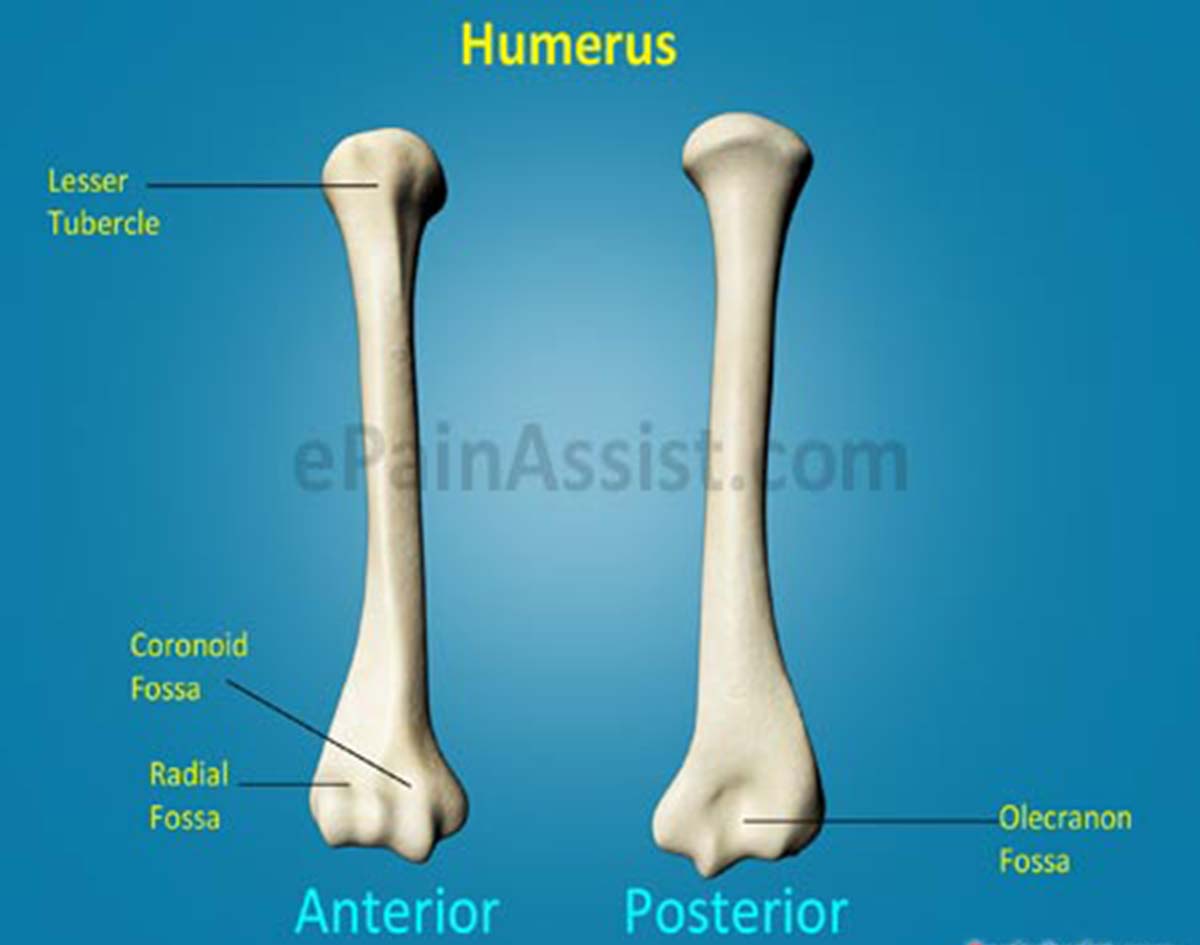Elbow joint is a synovial hinge joint. Movements of the elbow joint are restricted to extension and flexion. Bones, ligaments, tendons, muscles and bursa support elbow joint.
Elbow Joint-

The Elbow joint is a link between following bones-
- Humero-Ulnar Articulation– Trochlea of the humerus articulates with trochlear notch of the ulna.
- Humero-Radial Articulation– Capitulum of the humerus articulates with the head of the radius.
- Radius-Ulna Joint– A pivot joint between radius articulates with ulna.
Bones of the Elbow Joint-
Humerus-
Distal part of the humerus forms the elbow joint. Anatomical structure of distal humerus is as follows-

- Medial Epicondyle– ligaments and tendons are attached.
- Lateral Epicondyle– ligaments and tendons are attached.
- Radial Fossa– Radius bone links with humerus at radius fossa, which is located anteriorly (front) on lateral (outer) side.
- Coronoid Fossa– Ulnar bone is linked with humerus at coronoid fossa, which lies on medial side (inner side) of anterior (front) surface of distal humerus. Coronoid fossa is relatively large indentation located on medial side next to lateral radial fossa.
Radius and Ulna
Proximal end of the radius and ulna is linked with humerus to form an elbow joint. Anatomical structure of proximal end of radius and ulna is as follows-
Radius-
Head of radius links with radial fossa to form Humero-Radial Elbow Joint.
Ulna-
- Coronoid Process– Links with coronoid fossa of the humerus to form Humero-Ulnar Elbow Joint.
- Trochlear Notch– Trochlear notch is semilunar in shape and linked with articulating surface of humerus.
- Olecranon Process– Posterior extension of ulna links with olecranon fossa of humerus during extension of elbow joint. The olecranon posteriorly acts as an insertion point for muscles crossing the elbow joint.
- Radial notch or fossa– Links with head of radius to form Radius-Ulna Elbow Joint. Radial fossa is a small anterior indentation located superior to condyle accepts head of radius during flexion of elbow joint.
Synovial Membrane-
Synovial membrane covers the elbow joint except articulating surface. Synovial membrane lies beneath the elbow joint capsule. Membrane lines the inner surface of the fibrous joint capsule and attaches to humerus and ulna. Synovial membrane attaches articular margins of humerus anteriorly and covers coronoid and radial fossa. Posteriorly synovial membrane covers olecranon process. Distally synovial membrane spreads over radius and ulna. Synovial folds known as plicae projects into recesses of the joint.
Joint Capsule-
- Capsule covers synovial membrane. Capsule is composed of thick and tough longitudinal fibrous tissue.
- Capsule spreads over coronoid fossa, olecranon fossa, radial and ulnar articulation.
- Medially, the joint capsule thickens to form the medial or ulnar collateral ligament, which extends from the medial epicondyle of the humerus to the coronoid and olecranon of the ulna.
- The oblique band is a part of ulnar or medial collateral band. Oblique band also helps to deepen the trochlear notch. It is formed by the thickening of the medial joint capsule.
- Deeper fibers of brachialis muscles are attached to anterior capsule.
- Capsules are thin posteriorly and capsular fibers are placed in transverse direction.
- On the posterior side the capsule is thin and mainly composed of transverse fibers.
Ligaments of Elbow Joint-
Ulnar or Medial Collateral Ligament-

Ulnar or medial collateral ligament extends from the medial epicondyle of the humerus to the coronoid and olecranon of the ulna. Ulnar collateral ligament is triangular in shape and divided in 3 bundles known as bands.
- Anterior or cord like band (bundle)
- Posterior fan like band (bundle)
- Oblique or transverse band (bundle).
Radial Collateral Ligaments-

- Lateral or radial collateral ligament extends from the lateral humeral epicondyle and distally blends with radial annular ligament.
- Radial Annular Ligament (RAL) – RAL of the radius wraps around the head of the radius and attaches to the ulna anteriorly and posteriorly.
Tendon and Muscles of Elbow Joint-
Muscles of the elbow joint are divided into flexor and extensor muscles. Tendons of the flexor and extensor muscles are attached to epicondyles of the humerus.

- Flexor Muscles– Muscle contraction causes flexion or forward bending of forearm over arm anteriorly or in front of elbow joint.
- Extensor Muscles– Muscle contraction causes extension or straightening of the arm from flex position.
Bursa of Elbow Joint-
Bursa is a membranous sac filled with viscous synovial fluid. Bursa prevents injuries to tendon, ligaments, cartilages and muscles. The bursa acts as cushion during movement of the joint and acts as a shock absorber. Three major bursae are located at the elbow joint.
- Subcutaneous Olecranon Bursa– Bursa is located in the connective tissue over the olecranon process of ulna.
- Intratendinous Olecranon Bursa– Bursa lies under triceps brachii tendon.
- Subtendinous Olecranon Bursa– Bursa is located between triceps tendon and the olecranon process proximal to its insertion on the olecranon.
Musculature
Flexors-
- Biceps brachii.
- Brachialis.
- Brachioradialis.
- Pronator Teres (all flex the elbow).
Extensors-
- Triceps Brachii.
- Anconeus Serve.
- TeachMeAnatomy. (2021). Elbow Joint Anatomy https://teachmeanatomy.info/upper-limb/joints/elbow-joint/
- American Academy of Orthopaedic Surgeons. (2018). Elbow (Olecranon) Bursitis https://orthoinfo.aaos.org/en/diseases–conditions/elbow-olecranon-bursitis/
Also Read:
